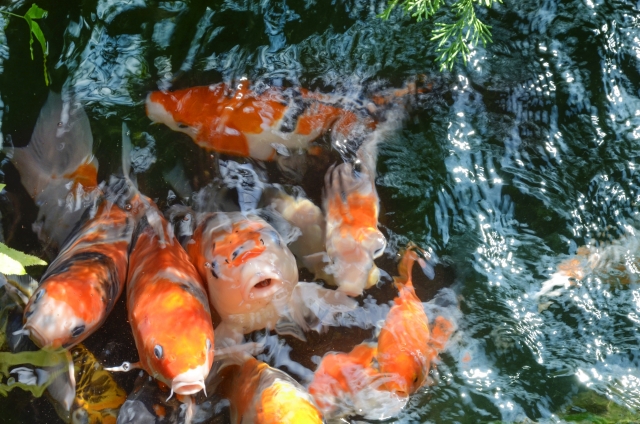End of the year, I visited Nara Todaiji Temple. After taking lectures of the graduate school in Kyoto, I visited Nara where I’d been longing for. To go see the Great Buddha is the first time in 30 years since high school excursion. Departing from Kintetsu Kyoto Station and looking out the view from the train.
年末に奈良東大寺へ行って来た。大学院の授業を京都で受けた翌日、ずっと再訪したかった奈良へ足を伸ばした。大仏さんに会いに行くのは、実に三十年前の高校の修学旅行ぶりだ。近鉄京都駅を出て、車窓から流れて行く景色を眺める。

Countryside landscape of Japan should be no different from other areas, yet the path to Nara leaving refined Kyoto seems to stay the same for 1,300 years since Heijo Kyo was relocated for the ancient capital. Wondering if offsprings of Sogano Iruka, the man of power in Nara Era are still residing in the neighborhood.
田舎の風景は日本中どこでも同じ筈なのだけれど、雅なる京の都をしばし離れて大和大路へ向かう道にあるものは、平城京ができた1300年前と何も変わらないのではないかという様な気がしてくる。蘇我入鹿の子孫は、きっとまだ奈良にいてはるやろうな。

So calm and peaceful, or even more vast and primitive time flows. Felt as if I caught a glimpse of Heijo Kyo that is untouched and preserved. Since the relocation of the capital in 710, the core of the everlasting ancient spirit is still remaining here. Deer in Nara Park are wild species designated as protected animals of the country.
穏やかで平和な風情がある、というよりももっと茫洋とした太古のたゆたう様な時間の流れ。手付かずでそのままにある平城京の面影をそこかしこに見つけた気がした。710年に平城京が遷都して以来の、悠久の時が流れる古都の姿が今もここにあるのだ。奈良公園にいる鹿(ニホンジカ)は、国の天然記念物に指定されている野生動物である。

Nandai Mon Gate, the original gate built around 740 was repeatedly on fire or destruction. The present gate was build in 1199. Isozaki Arata, the architect claimed this is the only masterpiece of architecture in Japan.
天平時代 (740年頃) に創建された南大門は火災や倒壊を繰り返し、現在の南大門は1199年に上棟されたもの。建築家の磯崎新は、日本建築の中での唯一の傑作としている。


Wooden statues of Kongo Rikishi inside the Nandai Mon Gate are constructed by sculptors of Buddhist images, Unkei & Kaikei in Kamakura Era (end of 12C.~1333). A-Gyo and Un-Gyo.
南大門の中に収まっている、鎌倉時代 (12世紀末~1333年) の仏師であった運慶・快慶が造った金剛力士像、阿形と吽形。口の形が「あ」となっているのが「あぎょう」で、「うん」と結んでいるのが「うんぎょう」だ。

When in high school excursion, I had my picture taken here with friends. In those days, I had curly hair and the bangs looked quite strange. Silly memories gushing in. Myself of 30 years ago and the present almost haven’t changed a bit.
高校の修学旅行の時、ここで友達と一緒に写真を撮って貰った。あの頃はクルクルパーマをかけていて、変な前髪してたなぁ。と、どうでもいいことを思い出す。三十年前の自分と今の自分、殆ど中身が変わっていないことに妙な感慨を覚える。

I’m majoring in Cultural Heritage and Traditional Arts of Japan in the graduate school. And learned the historical process of the Great Buddha construction through online lectures. In 8th century Nara Era, Emperor Shomu was relocating the capital a number of times praying for settlement of calamities. And the construction of the Great Buddha was the unprecedented project to sooth epidemics, famines, fires, earthquakes, and political instabilities. Sincere prayer of the ruler believing the country be saved by enhancing Buddhism.
大学院で日本の文化遺産・伝統芸術の領域を専攻しているので、大仏(盧舎那仏)が造られる様になった歴史的な経緯を、オンライン講義を通じてとても興味深く学んだ。奈良時代 (8世紀) 、厄災が続く中、聖武天皇は都を次々に移動させて国家の平安を願っていた。そして大仏の建立は疫病、飢饉、火事、地震、政情不安から抜け出し鎮めるために行われた、それまでに例を見ない一大事業であった。仏教を盛んにすることが国家を救うという、為政者の切実な願いがあったのだ。
Tohdai ji temple Wikipedia
東大寺盧舎那仏像 ウィキペディア

The Great Buddha is sitting hugely inside of Daibutu Den.
この大仏殿の中に盧舎那仏が大きく鎮座している。

Here I must confess, I chose World History in high school and not that bountifully informed with Japanese History. That’s why I’m studying. Therefore, I didn’t know much about Buddhist Art. But when confronting with the Great Buddha, Daibutu san or other statues in person, I could vividly sense sincere prayers for peace by Buddhist image sculptors, most of whose names were not carved into the history.
私は高校生の頃に世界史を選択したので、実は日本の歴史にそれほど明るくない。という訳で目下勉強中の身である。であるからして仏教美術のことをこれまで殆ど知らずに来たけれど、大仏さんやその他多くの仏像を目の前にしてじっと対峙すると、歴史に名を刻むことはなかった仏師たちの、丹精込めた平安なるものへの切実なる希求と祈りが、今もそこに漂っているのがありありと知覚できる。

Conflicts continued, epidemics prevailed, and natural disasters were rampant in the ancient Nara. Consequently, the work of dedication, devoting oneself for something bigger was retaining the genuine purity for over 1,000 years. I was deeply touched.
戦が続き、疫病が流行り、天災にも悩まされた奈良の地で、自己を超えた大きなものへ身を捧げるという仕事は、千年以上の時を経ても、その純度は薄まることなく保たれ続けるという奇跡に、深く深く感じ入った。

The Great Buddha was constructed with a number of scaffoldings, making mold and pouring copper. If I were born in the period, I’d wish to carve Buddha images day after day in the studio in Nara. Perhaps it won’t be a lucrative business, yet a life of endeavor with striving efforts must be so rewarding. I imagine such things whenever visiting museums since little.
大仏は何箇所も足場を建てて、銅の鋳型を流し込んで作られた。自分がもしもその時代に生まれていたら、仏師として奈良の造仏所の工房で心を無にして毎日仏像を彫っていたかったな、と思ったり。お金儲けはできなくても、きっと毎日精進を重ねる人生は良いものだったろうな、と空想したりする。子供の頃から博物館へゆくと、いつもこんなことを心に浮かべている。

In Nara Era (8C.), Heian Era (end of 8C. to end of 12C.), Kamakura Era (end of 12C. to 1333), who were carving sculptures? What were they thinking? Master’s demand was extremely uncompromising? Repeatedly required for improvement? Designed under Wasan Japanese mathematics? How many kinds of tools were there? Management of the tools was rigid? Etc, etc. Wings of imagination fly high in the sky crossing over millennium.
奈良時代 (8世紀) 、平安時代 (8世紀末から12世紀末) 、鎌倉時代 (12世紀末から1333年) 、どんな人がどんな人生の中で何を思い、仏像を彫っていたのだろう。親方の要求水準は限りなく厳しかったかな、何度もダメ出しされたかな、和算に基づいて図案設計したのだろうな、彫刻道具は何種類あったのかな、道具の管理も徹底していただろうな、などなど、千年以上の時を超えて想像の翼は空高く羽ばたいて行く。

Christianity and Islam forbid idol worship severely. On the contrary, in Buddhism creating Buddha images was the practice of faith and people believe in Buddhism by praying Buddha statues. Japan is rare that ancient Buddha statues remained and prayed as a deity of a temple. It’s clear to see a map that Japan located Far East is the terminal of the Silk Road. And Kakuzo OKAKURA declared Japans as a museum of Asiatic civilization.
キリスト教やイスラム教は偶像崇拝を固く禁じているが、仏教は仏像を造るという行為そのものが信仰の証であり、仏像を拝むことで仏教を信仰して来た。日本の様に古代の仏像が残り、寺の本尊として崇拝されている国は珍しい。地図を見れば分かるが、東の果てにある日本はシルクロードの終着点であり、岡倉天心は日本はアジア文明の博物館であるとした。

Nowadays, in academic studies it is regarded Japan is the country where ancient Buddhist Art and Buddhism are thriving the most. Reading sutras with peculiar melodies called Shomyo is considered as Buddhist Music for common heritage of mankind. The path to Nara, seeking for the root of Japanese history was filled with great romanticism.
そして現在、学術研究の世界では、日本は古代からの仏教美術が今も息づく仏教が最も盛んな国とされている。声明という独特の音の響きに支えられた念仏や読経も、今では仏教音楽として人類の共通遺産に挙げられている。日本の歴史を辿る大和大路の旅は、悠久の浪漫に抱かれた旅だった。
Love and Peace…
参考文献
『芸術教養シリーズ9 日本の芸術史 文学上演篇Ⅰ 歌、舞、物語の豊かな世界』編者 矢内賢二、藝術学舎、2014年
『アート・ビギナーズ・コレクション もっと知りたい 東大寺の歴史』筒井寛昭、梶谷亮治、坂東俊彦 著、東京美術、2010年初版
‘The Ideals of the East with Special Reference to the Art of Japan’ Kakuzo Okakura, IBC Publishing, 2009 (the original was published in 1903)






















